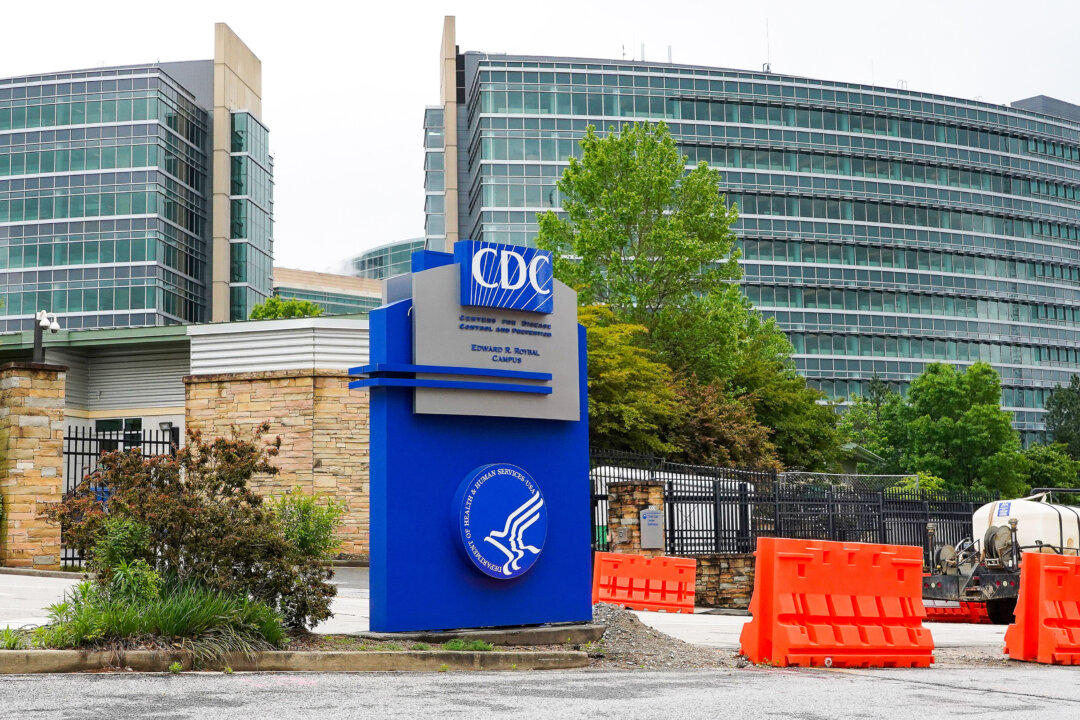


The U.S. Centers for Disease Control and Prevention (CDC) said this week that the new COVID-19 variant JN.1 doesn’t appear to show any new symptoms.
Research from officials in the United Kingdom in a recently published report indicates that new COVID-19 symptoms may have emerged, including anxiety and worry. Several media reports last week claimed that the British survey suggested that JN.1 was causing those new symptoms, although that report did not specifically mention the JN.1 variant and only made a general reference to COVID-19.
But a spokesperson for the CDC told Newsweek that “there is no data that would indicate JN.1 infection produces different symptoms from other variants,” adding, “In general, symptoms of COVID-19 tend to be wide ranging with all variants.”
The Epoch Times has contacted the federal health agency for comment.
Survey data collected by health officials in the United Kingdom found that approximately 10.8 percent of surveyed UK residents reported having issues trying to sleep. The same dataset shows that 10.5 percent of survey respondents cited worry or anxiety as a COVID-19 symptom. In comparison, a survey released in 2022 for Scotland shows no mention of trouble sleeping or insomnia as symptoms.
One common symptom linked to COVID-19 was a loss of taste or smell, but that symptom wasn’t widely reported in the latest survey. Only about 2 percent said their taste or smell was altered.
And meanwhile, only 2.4 percent reported having a fever associated with COVID-19, according to the report.
The CDC spokesperson added to the outlet that “the types of symptoms and how severe they are usually depend more on a person’s immunity and overall health rather than which variant causes the infection.”
“There have been reports that COVID-19 may be associated with insomnia and anxiety in some patients, and therefore that can be a general symptom of infection and not related to the variant,” the CDC official said, adding that the agency “is constantly researching the effects of COVID variants and will update the public as we learn more.”
In a Dec. 22 update—the last for JN.1—the CDC said that its spread “does not appear to pose additional risks to public health beyond that of other recent variants. CDC is closely monitoring COVID-19 increases domestically and internationally and will communicate if the situation changes.”
The CDC estimated that as of Dec. 8, JN.1 made up 15 to 29 percent of cases in the United States, but it has since increased to about 44.1 percent of cases, the most recent data show.
“Right now, we do not know to what extent JN.1 may be contributing to these increases or possible increases through the rest of December like those seen in previous years,” the agency said.
The CDC currently lists symptoms of COVID-19 infection as fever or chills, sore throat, cough, runny nose or congestion, difficulty breathing, fatigue, loss of smell or taste, muscle aches, headaches, brain fog, and stomach issues such as vomiting or diarrhea.
Several days before the CDC released its most recent data for JN.1, the U.N.’s World Health Organization (WHO) described it as a “variant of interest,” but it noted there is little evidence to suggest it causes more severe symptoms.
The variant, according to the WHO, “may cause an increase in SARS-CoV-2 cases amid a surge of infections of other viral and bacterial infections, especially in countries entering the winter season,” referring to the virus that causes COVID-19.
In a separate update, the CDC also reported more than 14,700 flu hospitalizations in that same period last month.
Historical CDC trends suggest that the recent increase in COVID-19 cases is relatively the reported “surges” that occurred during 2020, 2021, and 2022. The data show that for the week ending on Dec. 23, 2023, there were some 29,000 hospitalizations across the United States. In comparison, for the week ending on Dec. 24, 2022, there were about 39,000 hospitalizations.
Mandates Return?
In the past week or some, hospitals in Massachusetts, New York, California, Illinois, Delaware, Washington, and elsewhere have moved to re-instate mandatory masking, while government agencies in New York City and Los Angeles County imposed mandates.Because of reported increases in respiratory viruses, the mandate “applies to clinical settings such as our hospitals, community health centers, and nursing homes,” a spokesperson for New York City-run hospital system that operates 11 facilities in the five boroughs told the New York Post.

In Chicago, Rush University medical system mandated on Jan. 2 that all patients, visitors, and staff have to “wear hospital-approved masks in some areas of the campus.”
Medical facilities in Wisconsin, North Carolina, and Washington state have reimposed mask requirements, too, according to local reports. In Delaware, TidalHealth announced on Dec. 28, 2023, that it’s mandating masks for all hospital visitors who enter patients’ rooms.
Weeks ago, multiple California counties across the Bay Area had already reimposed mask mandates for staff. That order started in November 2023 and will run until the end of spring because of a predicted rise in respiratory illnesses, officials have said.
The Associated Press contributed to this report.


